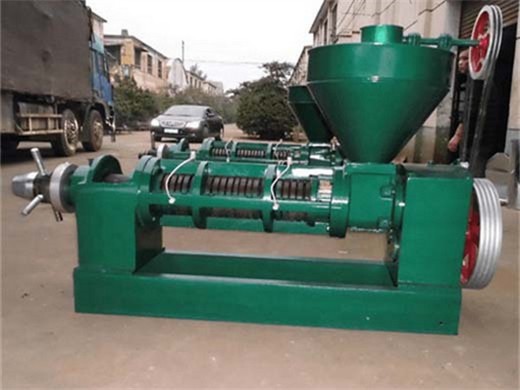FATTY ACID COMPOSITION OF EDIBLE OILS AND FATS
percentage of unsaturated fatty acids in the triacylglyc erols. In general, higher degree of unsaturation of fatty acids in vegetable oils, the more susceptible they are to oxidative deterioration [3, 7, and 8]. Therefore, it is es-sential to know the composition of fatty acids of an oil or fat, to identify their characteristics and to determine
Typical Fatty–Acid Compositions of Some Common Fats (adapted from Gunstone, F. Fatty Acid and Lipid Chemistry; Blackie: London, 1996, and other sources) Specific compositions are variable, depending on diet and other factors. The symbol for an acid includes the total
Coconut Oil an overview ScienceDirect Topics
Coconut oil is a source of many oleo chemicals such as fatty acids, methyl esters, and fatty alcohol. For cooking and toiletry purposes, it is commonly used in the form of filtered coconut oil. coconut oil, which is a high-quality oil, is prepared from the milk extracted from the raw kernel.
Coconut oil is considered a lauric oil whose fatty acid composition is high in lauric acid (45–50%). Moreover, coconut oil is a rich source of medium chain triglycerides with carbon numbers falling mostly in the C32 to C44 range. Coconut oil is sold as grades 76 or
Coconut oil
Coconut oil has been tested for use as an engine lubricant and as a transformer oil. Coconut oil (and derivatives, such as coconut fatty acid) are used as raw materials in the manufacture of surfactants such as cocamidopropyl betaine, cocamide MEA, and cocamide DEA. Acids derived from coconut oil can be used as herbicides.
Coconut Oil: Chemistry, Production and Its Applications A Review Table 4. Fatty acid composition of coconut oil and some other vegetable oils. fatty acids in coconut oil are distinctly.
Coconut Oil & Medium-Chain Fatty Acids
Coconut oil contains antioxidants such as vitamin E, provitamin A, polyphenols and phytosterols. Because coconut oil has a lot of medium-chain fatty acids it can be useful for malabsorption conditions. May have some antibacterial, antiviral and antifungal properties. May
Abstract: Characterizations of fatty acids composition in % of total methylester of fatty acids (FAMEs) of fourteen vegetable oils—safflower, grape, silybum marianum, hemp, sunflower, wheat germ, pumpkin seed, sesame, rice bran, almond, rapeseed, peanut, olive, and coconut oil—were obtained by using gas chromatography (GC). Saturated (SFA),
Lauric Acid is a Medium-Chain Fatty Acid, Coconut Oil is a
approximately half of the fatty acids in coconut oil; likewise, medium-chain triglycerides which contain lauric acid account for approximately half of all triacylglycerides in coconut oil. It is, therefore, justified to classify coconut oil as a medium-chain vegetable oil.
Triglycerides of coconut oil were fractionated by GLC into 13 groups based on their carbon numbers of 28 to 52. These groups represent 99.8% of the total glycerides of coconut oil. With the fatty acid composition of each group, it was possible to calculate the composition of 79 types of triglycerides. These types are defined by the nature of their constitutive fatty acids but the position of






